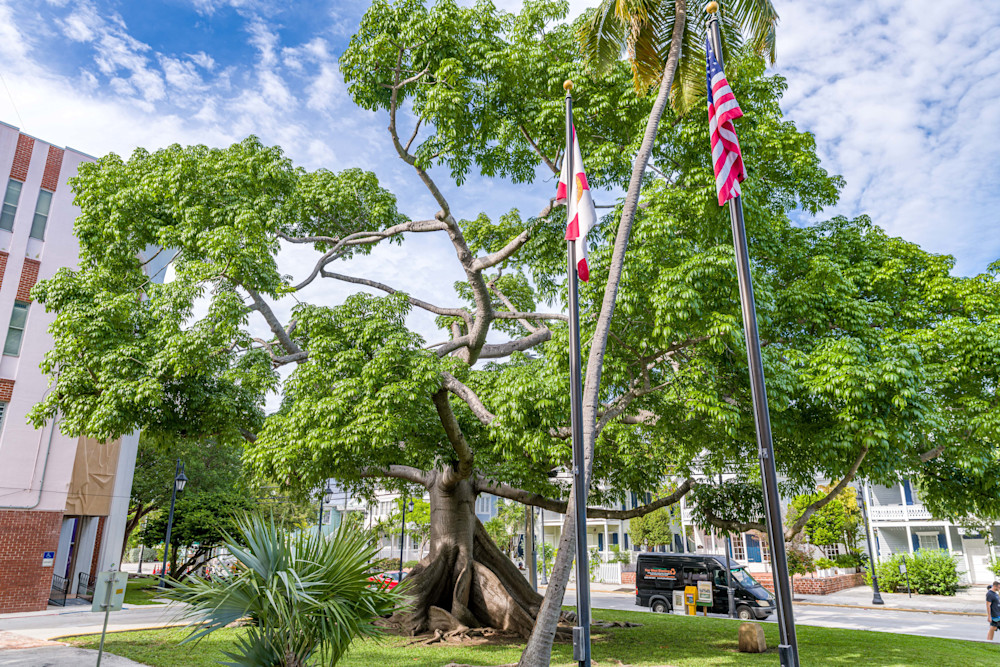The streets of cities and towns in the Florida Keys are often adorned with a variety of tropical trees, contributing to the unique and lush environment of the region. While specific tree species may vary, some common types of trees that can be found along the streets in the Florida Keys include:
1. **Royal Poinciana (Delonix regia):**
- Known for its vibrant orange-red flowers, the Royal Poinciana is a striking tree often seen along streets in tropical regions.
2. **Coconut Palm (Cocos nucifera):**
- The iconic Coconut Palm is a staple of the Florida Keys landscape, with its tall trunk and feathery fronds providing shade and a tropical ambiance.
3. **Mahogany (Swietenia mahagoni):**
- Mahogany trees, with their glossy green leaves and large canopy, are commonly planted along streets for their shade and ornamental value.
4. **Gumbo Limbo (Bursera simaruba):**
- Also known as the "tourist tree" for its red and peeling bark, Gumbo Limbo trees are well-suited to the coastal environment of the Florida Keys.
5. **Sea Grape (Coccoloba uvifera):**
- Sea Grape trees, known for their broad, round leaves and clusters of grape-like fruit, are often planted along coastal streets.
6. **Buttonwood (Conocarpus erectus):**
- Buttonwood trees, with their dense foliage and distinctive gnarled appearance, are commonly used for landscaping along streets and in parks.
7. **Silver Buttonwood (Conocarpus erectus var. sericeus):**
- This variety of Buttonwood has silvery leaves, adding to its aesthetic appeal, and is well-suited to the coastal environment.
8. **Fishtail Palm (Caryota spp.):**
- Fishtail Palms are recognized for their unique, fishtail-shaped fronds and are planted for their tropical and exotic appearance.
9. **Pigeon Plum (Coccoloba diversifolia):**
- Pigeon Plum trees are native to coastal areas and are valued for their dense foliage and tolerance to salt spray.
These trees not only provide shade but also contribute to the overall beauty and tropical character of the Florida Keys. The choice of trees is often influenced by the need for salt tolerance, resistance to strong winds, and the desire to create a visually appealing and environmentally friendly urban landscape.
















